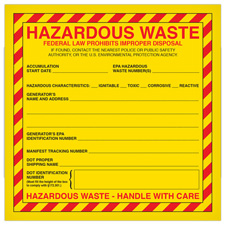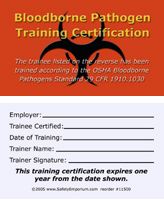| The Home page of ILPI's Safety Data Sheet (SDS) Resource, the leader in SDS information since 1995! | |
| The history and philosophy behind this resource. | |
| A curated collection of books and reference materials concerning Safety Data Sheets and closely related topics. | |
| Paste your plain text SDS into the SDS-Demystifier, and it will be converted into a hypertext-enriched document with links to detailed explanations of each key term. | |
| An extensive list of frequently asked questions about Safety Data Sheets including regulations, content, compliance, and more. | |
| A humorous take on Safety Data Sheet jargon. Fill in the blanks on our entry form to generate a personalized Unsafety Data Sheet to share with your coworkers. | |
| Since 1995, we've maintained this massive curated list of the best places to find Safety Data Sheets on the Internet. | |
| Way more than a glossary, this hypertext-enhanced resource covers hundreds of SDS-related terms and expert knowledge. Each entry includes both the SDS relevance and links to additional authoritative resources. | |
| Archived results of Safety Data Sheet related polls taken by some of our millions of site visitors | |
| You are here! The OSHA regulations behind SDS regulations, including the inspection guidelines and over 400 official interpretations letters under the Hazard Communication Standard | |
| Commercial suppliers of SDS authoring and management software as well as cloud compliance services. | |
| Commercial companies that will create SDS's for your specific needs as well as SDS translation companies. |

Safety signs, banners, and scoreboards? Get yours at Safety Emporium!
| Title: 01/11/2001- Labeling requirements under the HAZCOM and Laboratory standards; use of safe needle devices. | |
| Record Type: Interpretation | Standard Number: 1910.1200(f) ;1910.1450(h)(1)(i) ;1910.1030(d)(2)(i) |
OSHA requirements are set by statute, standards and regulations. Our interpretation letters explain these requirements and how they apply to particular circumstances, but they cannot create additional employer obligations. This letter constitutes OSHA's interpretation of the requirements discussed. Note that our enforcement guidance may be affected by changes to OSHA rules. Also, from time to time we update our guidance in response to new information. To keep apprised of such developments, you can consult OSHA's website at https://www.osha.gov
January 11, 2001
Danette L. Pravidica, Technical Specialist
Laboratory Accreditation Programs
College of American Pathologists
325 Waukegan Road,
Northfield, Illinois 60093-2750
Dear Ms. Pravidica:
Thank you for your October 9, 2000 letter to the Occupational Safety and Health Administration's (OSHA's) Directorate of Compliance Programs (DCP). This letter constitutes OSHA's interpretation only of the requirements discussed and may not be applicable to any questions not delineated within your original correspondence. You had specific questions regarding the applicability to clinical laboratories of OSHA's Laboratory Standard, 29 CFR 1910.1450; Hazard Communication Standard, 29 CFR 1910.1200; and Bloodborne Pathogens Standard, 29 CFR 1910.1030. Your scenario and questions are restated below followed by our responses.
Question 1: Is it necessary to label each bottle of reagent even if it will be used in a timely manner?

Get your hazardous waste labels from Safety Emporium.
Reply: The labeling requirement depends on the OSHA standard which covers your facility. OSHA's Hazard Communication Standard (HCS), at 29 CFR 1910.1200(f)(5) states "... the employer shall ensure that each container of hazardous chemicals in the work place is labeled, tagged or marked with... (i) Identity of the hazardous chemicals...and (ii) Appropriate hazard warnings, or alternatively, words, pictures, symbols or combination thereof,...to...provide the employees with the specific information regarding the physical and health hazards of the hazardous chemicals." Paragraph 6 allows an employer to use signs, placards, process sheets, batch tickets, operation procedures, or other such written materials in lieu of labels, providing the required information is conveyed.
OSHA's Laboratory Standard, at 29 CFR 1910.1450(h)(1)(i) states that, "Employers shall ensure that labels on incoming containers...are not removed or defaced." Furthermore, if chemicals are developed in the laboratory, the employer need only provide the appropriate training as outlined in the standard. This standard covers only those facilities meeting the criteria of "laboratory use" and "laboratory scale" as defined therein.
The HCS requirements apply to all hazardous chemicals, defined as "... any chemical which is a physical or a health hazard." The Laboratory Standard applies to all hazardous chemicals meeting the definition of "laboratory use" and having a potential for employee exposure.
Paragraph (b) of the Laboratory Standard, 29 CFR 1910.1450, defines the "laboratory use of hazardous chemicals" to include the handling or use of hazardous chemicals where all of the following conditions are met: multiple chemical procedures or chemicals are used; the procedures involved are not part of a production process, nor in any way simulate a production process; and the chemical manipulations are carried out on a "laboratory scale." The definition of "laboratory scale" specifically excludes those workplaces which function to produce commercial quantities of materials.
Question 2: Are coding systems acceptable in place of writing precautionary information on secondary containers?
Reply: Please see our reply to your first question. Also, 29 CFR 1910.1200(f)(7) states, "The employer is not required to label portable containers into which hazardous chemicals are transferred from labeled containers, and which are intended only for the immediate use of the employee who performs the transfer...."
For further information on labeling requirements, see OSHA's Compliance Instruction on the HCS, CPL 2-2.38D, which will provide further guidance on chemical labeling and other aspects of the HCS. You can search for this document on OSHA's website at https://www.osha.gov [Or try our handy hypermarked version of that by clicking the first link in this paragraph -- ILPI].
Question 3: Does this requirement apply only to hazardous chemicals or all chemicals used by the laboratory?
Reply: Please see our reply to your first and second questions above.
Scenario: "At an on-site inspection, an OSHA compliance Officer (CSHO) notices a laboratory NOT using safe needle devices. The laboratory claims that this is too costly and justifies their practice by stating there has been zero needlestick incidents."
Question 4: Would OSHA consider this a citation with an associated fee?
Reply: The fact that the facility has "zero needlestick incidents" and such devices are too costly, does not prevent the issuance of a citation. OSHA's Bloodborne Pathogens Standard, 29 CFR 1910.1030, states at (d)(2)(i) that, "Engineering and work practice controls shall be used to eliminate or minimize employee exposure...." Citations will be issued to any employer that has not implemented engineering controls where feasible. OSHA's Compliance Instruction on the Occupational Exposure to Bloodborne Pathogens Standard is CPL 2-2.44D. This document states: "Where engineering controls will reduce employee exposure either by removing, eliminating or isolating the hazard, they must be used." If the employer is using one engineering control but there are other controls, such as "safe needle devices," available, then OSHA may issue a citation based on specifics of the investigation and the Compliance Safety and Health Officer's review of the exposure control plan. Employers must institute engineering and work practice controls as the primary means of eliminating employee exposure or reducing it to the lowest extent feasible. The key is to prevent potential employee exposure to needlesticks.
Section 17(b) of the Occupational Safety and Health Act of 1970 (The Act) states, "Any employer who has received a citation for a serious violation... shall be assessed a civil penalty of up to $7000 for each such violation." A serious violation is defined as a workplace condition which can cause death or serious physical harm. Again, for further guidance on this issue, you may wish to consult the Bloodborne Pathogens Compliance Instruction, CPL 2-2.44D which is available at OSHA's Internet Homepage site [Or try our handy hypermarked version of that by clicking the first link in this paragraph -- ILPI]. Also, for further assistance or in response to other questions you may have, please feel free to contact OSHA's Chicago Regional Bloodborne Pathogens Coordinator at:
U.S. Department of Labor - OSHA
230 South Dearborn Street, Room 3244
Chicago, IL 60604
Phone: (312) 353-2220
Thank you for your interest in occupational safety and health. We hope you find this information helpful. OSHA requirements are set by statute, standards and regulations. Our interpretation letters explain these requirements and how they apply to particular circumstances, but they cannot create additional employer obligations. This letter constitutes OSHA's interpretations of the requirements discussed. Note that our enforcement guidance may be affected by changes to OSHA rules. Also, from time to time we update our guidance in response to new information. To keep apprised of such developments, you can consult OSHA's website at https://www.osha.gov.
Sincerely,
Richard E. Fairfax, Director
Directorate of Compliance Programs
cc: Dr. Yodaiken
The original official public domain version of this document is available from OSHA at https://www.osha.gov/laws-regs/standardinterpretations/2001-01-11.
